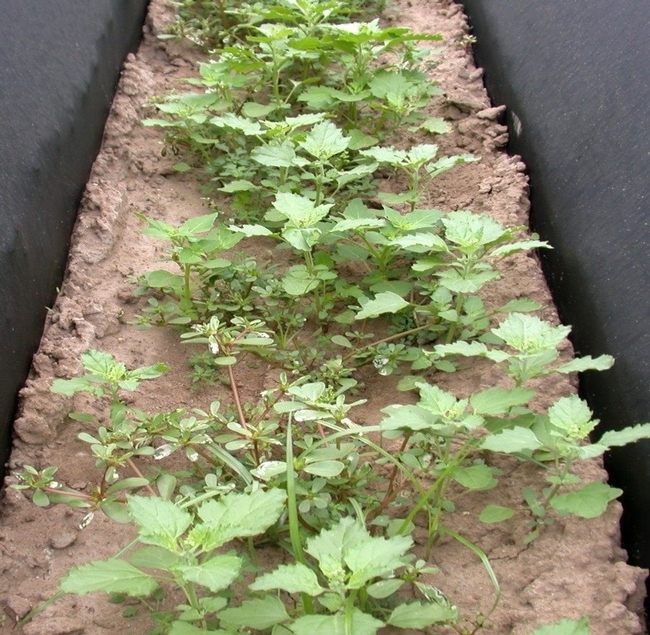From the Topics in Subtropics blog (Oct. 15, 2018)
******************
Although the main objective of herbicide use in avocado orchards (and all crops) is to manage weed populations, sometimes unintentional injury of the crop itself can occur when herbicides are incorrectly applied. Herbicide injury in avocado can reduce yield, decrease fruit, reduce plant vigor, increase susceptibility to diseases and pests, and sometimes result in plant death. Common situations resulting in injury include spray drift, tank contamination, application of the wrong herbicide or rates, and herbicide carryover from a previous crop. The extent of herbicide damage on avocado can vary widely according to factors such as herbicide mechanism of action (MOA) and application rate, route of exposure, plant size and growth stage, soil properties, and weather.
Herbicide injury can be difficult to diagnose properly and is often confused with disease, insect damage, nutrient deficiencies, and other environmental stresses. It is recommended that trained researchers or Pest Control Advisers, who may utilize plant tissue, make diagnoses or soil samples along with plant symptoms, injury progression, and other plant species affected, orchard herbicide use history, weather conditions, and other factors to confirm or rule out injury from herbicides or other causes.
Where the injury occurs can also be an indication of herbicide injury. For example, if injury is on just one side of a tree or trees near another field, it may be an indication of spray drift. If it occurs only along the edge of the skirts, it may be a hint that an uneven ground spray was applied.
The majority of herbicides for use in avocado orchards in California fall into eight MOAs as defined by the Weed Science Society of America. MOAs describe the specific biological processes that are disrupted by a group of herbicides. These processes control the growth and development of plants and when interfered with, can result in plant injury or death.
Table 1: Common herbicides used in avocado, their mechanism of action, and possible injury symptoms
|
WSSA Group |
Mechanism of Action |
MOA description1 |
Example herbicides |
Possible injury symptoms1 |
| 1 | Acetyl CoA Carboxylase (ACCase) Inhibitors | Inhibits lipid creation in grasses, preventing production of plant cell membranes | Fluazifop-P-Butyl (Fusilade DX), Sethoxydim (Poast)< | Chlorosis, necrotic spots, leaf crinkling, leaf distortion |
| 3 | Mitosis Inhibitors | Inhibits cell division in germinating seedlings and lateral roots | Oryzalin (Surflan) | Thickened, shortened lower stems and small, crinkled leaves |
| 5 | Photosystem II Inhibitors | Prevents the transfer of energy generated during photosynthesis, causing a buildup of reactive molecules that damage chlorophyll and cell membranes | Simazine (Princep 4L) | Chlorosis, necrosis progressing from leaf margins toward the center of the leaves, foliar applications will appear as leaf burn |
| 9 | Enolpyruvyl Shikimate-3-Phosphate (EPSP) Synthase Inhibitors | Inhibits the production of three aromatic amino acids and the enzymes and proteins built from them | Glyphosate (Roundup) | Leaves of trees and vines become chlorotic 3 to 7 days after exposure, and margins of new leaves become necrotic< |
| 12 | Carotenoid Biosynthesis Inhibitors | Inhibits production of carotenoid pigments, which harvest light and protect chlorophyll from reactive molecules | Norflurazon (Solicam DF) | Plant foliage turns white and appears bleached< |
| 14 | Protoporphyrinogen Oxidase (PPO) Inhibitors | Blocks the production of chlorophyll and causes a buildup of reactive molecules that damage existing chlorophyll, carotenoids, and cell membranes | Oxyfluorfen (Goal 2XL), Carfentrazone (Shark EW), Flumioxazin (Chateau) | Drift injury will appear as speckling on leaf tissue. The necrotic spots are sometimes surrounded by a reddish colored ring. Injury from soil applications or residues appears as a mottled chlorosis and necrosis. |
| 21 | Cellulose Inhibitors | Inhibit cell wall synthesis and plant growth | Isoxaben (Gallery 75 DF) | Chlorosis, necrosis, leaf crinkling, leaf distortion, purpling of the leaf, and stunting |
| 22 | Photosystem I Inhibitors | Disrupts photosynthesis, forming reactive molecules that destroy cell membranes | Paraquat (Gramoxone SL) | Drift injury will appear as speckling or necrotic spots on leaf tissue |
1Not a complete list. Symptoms listed are likely for established orchards. For detailed descriptions of MOAs and injury symptoms, as well as a searchable database of specific injury images (e.g., “chlorosis, necrosis, stem swelling, etc.” visit http://herbicidesymptoms.ipm.ucanr.edu.
References:
Al-Khatib, K. 2015. University of California Integrated Pest Management Herbicide Symptoms. http://herbicidesymptoms.ipm.ucanr.edu (accessed 09/05/18)
Faber, B.A., C.A. Wilen, B.D. Hanson. 2016. Weeds. Pages 107-124 in University of California Integrated Pest Management Guidelines for Avocado. http://ipm.ucanr.edu/PMG/selectnewpest.avocado.html (accessed 09/05/2018)
Sosnoskie, L.M., B.D. Hanson. 2013. Understanding herbicide mechanisms (modes) of action and how they apply to resistance management in orchards and vineyards. UC Weed Science Blog Post. //ucanr.edu/blogs/blogcore/postdetail.cfm?postnum=9383 (accessed 09/05/2018)
Weed Science Society of America. Summary of Herbicide Mechanism of Action
According to the Weed Science Society of America. https://wssa.net/wp-content/uploads/WSSA-Mechanism-of-Action.pdf (accessed 09/05/2018)
